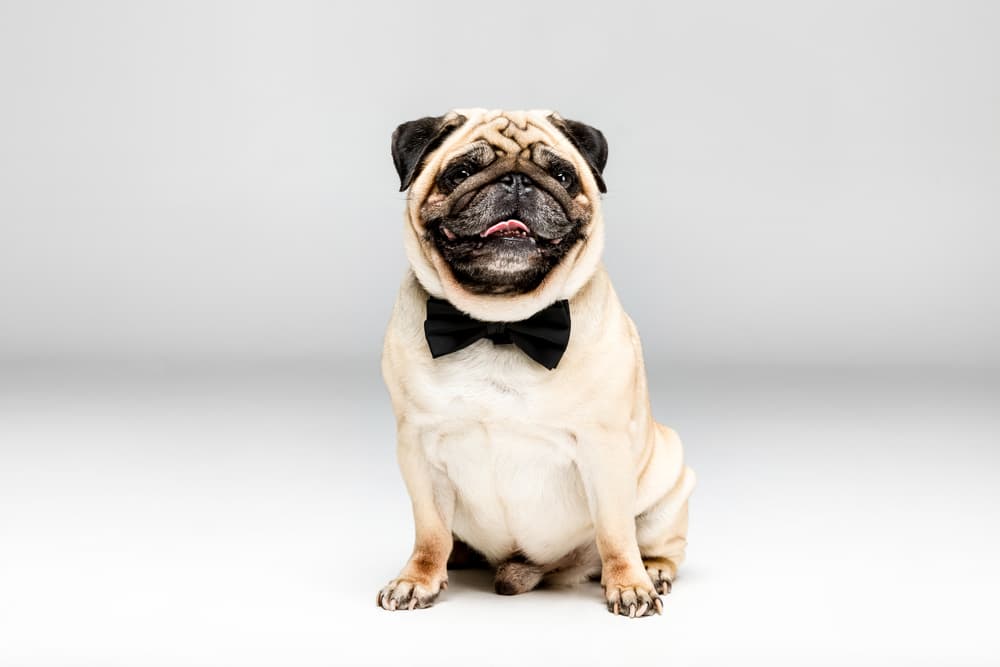Pugs are thickset and square and come in three colors: apricot-fawn, silver with a black face mask, or all black. The moles on a Pugs cheeks are called “beauty spots,” their mask or muzzle is black with a clear “thumb mark” on the forehead, and they have a black trace down the middle of their back. Their ears are black and velvety.
Besides a tightly curled tail, they have a characteristic undershot jaw where the lower teeth expand slightly past the upper teeth. According to legend, the Chinese, who bred Pugs, prized their wrinkles as they resembled symbols for good luck – especially wrinkles that looked like the word “prince” in Chinese.
They may be clowns at heart but carry themselves with pride. Pugs are intelligent, relatively quiet indoors, and love being the center of attention. So much so that they get heartsick if ignored. The bottom line, they must be close to their humans.





















